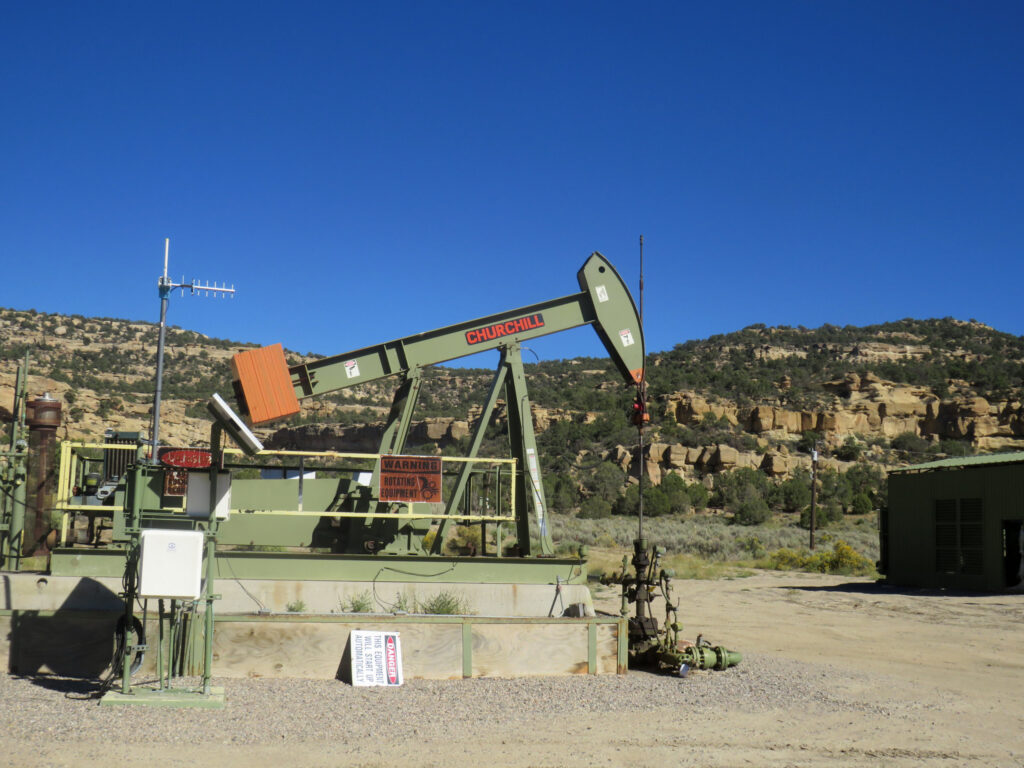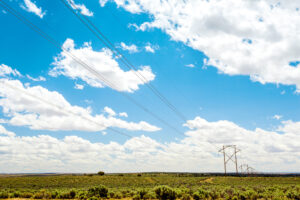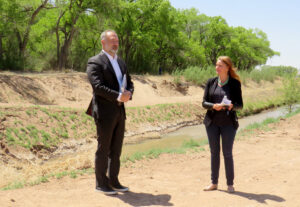State board adopts rules regulating emissions from oil, natural gas relating to ozone

After a lengthy discussion, the Environmental Improvement Board adopted ozone precursor rules on Wednesday evening.
The weeks-long hearing involved in depth discussions of each section and modifications to the rule. The EIB voted on each individual section and definition. These rules apply to oil and gas production in counties that are pushing the federal ozone thresholds. Those counties include Chaves, Doña Ana, Eddy, Lea, Rio Arriba, Sandoval, San Juan, and Valencia.
While Bernalillo County has also had problems with high ozone levels, it has its own air quality division.
“This rule is an enormous win for communities impacted by unhealthy air quality caused by oil and gas operations,” said NMED Cabinet Secretary James Kenney in a press release. “Over the next few months, we will begin robust and innovative compliance assurance activities to ensure oil and gas operations are adhering to these new requirements.”
The ozone precursor rule is intended to be paired with the methane waste rule developed by the Energy, Minerals and Natural Resources department to address emissions from oil and gas facilities. The New Mexico Environment Department developed the ozone precursor rule with input from industry groups,environmentalists and other stakeholders.
Both industry groups and environmental advocacy groups supported the rule.
Doug Ackerman, the president and CEO of New Mexico Oil and Gas Association, said NMOGA supports the new regulations and, in an email to NM Political Report, he described them as “effective without being needless[ly] burdensome on the industry.”
Ozone occurs with oxides of nitrogen and volatile organic compounds interact with sunlight to form smog. It is generally tied to the combustion of fossil fuels. While Ackerman said the new regulations will reduce emissions, he said NMOGA believes it will have a limited impact on the total level of ozone. He said the oil and gas industry is only one contributor to the ozone levels and is responsible for less than three parts per billion of the “roughly 75 parts per billion of ozone that exists today.”
The oil and gas producing counties in New Mexico tend to have higher ozone levels than other parts of the state and, by targeting ozone precursors, the state is also targeting emissions of chemicals that impact human health and of greenhouse gasses that contribute to climate change.
Ackerman said there were some changes made during the EIB deliberations that NMOGA believes were unnecessary and could prove to be more costly. He said those changes may also create additional onsite risk with very little impact on ozone levels. But, overall, he expressed satisfaction with the rules.
“In spite of these few departures from the NMED staff recommendations, we believe that these new regulations will reduce emissions and continue to illustrate the industry’s commitment to power New Mexico cleanly, efficiently, and safely now and into the future,” he said.
The rule will require frequent leak detection and repair at oil and gas facilities. Environmental groups say the new regulations will address greenhouse gas emissions that contribute to climate change while also protecting the health of community members living near oil and gas facilities. The rule is intended to allow for innovation and includes opportunities for companies to implement new technologies. The New Mexico Environment Department describes it as “technology neutral.” For example, the required leak detection allows companies to use satellites, air ships, drones and fence-line monitoring.
Leak detection must occur on a monthly basis and, if leaks are found, they must be fixed within 15 days, according to the new rule. Companies will also be required to maintain records and demonstrate continuous compliance.
Some of the EIB discussion included what requirements small businesses that have limited resources must comply with.
“The oil & gas industry is already one of the most heavily regulated industries in New Mexico. Any new or additional regulations can be burdensome for operators of any size but are particularly challenging for smaller operators with more limited resources,” Ackerman said.
Environmental groups argued that sometimes small facilities can be major emitters.
While some industry groups proposed less frequent leak inspections for low-producing wells, that was ultimately not included in the rule. The rule requires facilities near schools and homes to undergo more frequent inspections.
“NMED’s rules, which address outsized emissions from smaller, leak-prone wells and protect those living closest to development with more frequent inspections to find and fix leaks, offer a powerful example for the EPA to build on as it advances nationwide methane protections,” Jon Goldstein, the senior director of regulatory and legislative affairs for the Environmental Defense Fund, said in a press release.
The rulemaking process also saw the state’s second largest oil producer, Occidental Petroleum, join with environmental groups to advocate for measures intended to protect the air quality.
“Cutting methane pollution is one of the best levers we have to reduce air pollution and fight climate change,” said Celerah Hewes with Moms Clean Air Task Force in a press release. “With nearly 9,000 children under the age of 5 and over 78 percent of young kids living within a mile of an active oil or gas well in San Juan County alone, adopting strong rules that protect frontline communities is a breath of fresh air to parents around New Mexico.”
Oil and gas operators will also be required to calculate emission rates and have those calculations certified by a qualified engineer. Additionally, it establishes requirements for reducing emissions at various pieces of equipment as well as during different processes.
The ozone precursor rules come as a result of an executive order issued by Gov. Michelle Lujan Grisham intended to address climate change by reducing emissions from the oil and gas sectors.
“Today marks the fulfillment of a promise I made to New Mexicans – to create strong, enforceable regulations in the oil and gas sector that will result in cleaner, healthier air in our communities,” she said in a press release. “This is a momentous step forward in achieving our goals of lowering emissions and improving air quality. New Mexicans can be proud of the fact that we are leading the nation by implementing rules that protect our families and their environment.”
This article was originally posted on State board adopts rules regulating emissions from oil, natural gas relating to ozone







